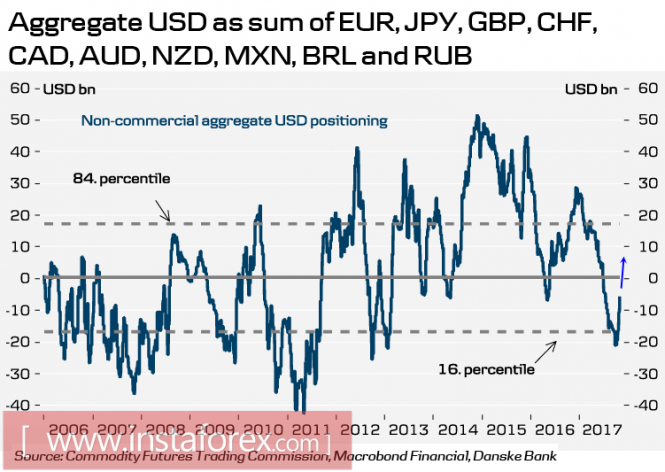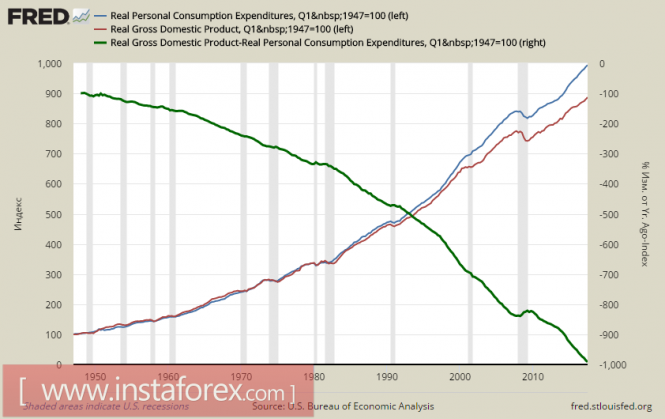The dollar began a neutral week, losing all the enthusiasm it had accumulated earlier. Part of this is due to the fact that all the main drivers that recently helped it have already been played back - the presentation of the new head of the Fed took place, the plan for tax reform was submitted to Congress, and the growth rates of the Fed rates at the last meeting were confirmed.
The Fed is moving to its goals faster than any other central bank. The pace of interest rate increase were quite fast, especially against the backdrop of weak inflation and the launch of the program for reducing the balance sheet, which could provoke a liquidity crisis. The demand for the dollar is steadily growing as a direct consequence of expectations on the rate of normalization of monetary policy.
The dynamics of the demand for the dollar is well monitored by CFTC reports. Speculative demand versus the 10 major currencies tracked by the stock exchange began to rise in mid-2016 and peaked on a wave of euphoria from Trump's victory by the end of December, followed by a prolonged fall. The lower point was reached at the end of August. Even the weaker than expected results of the Fed meeting in September could not prevent a turn in investor sentiment. At the moment, the demand for the dollar has been growing for several weeks and one can assume that the bottom is formed.

Thus, we can note the growing interest in US assets. Investors proceeded from the fact that the US economy is the locomotive of the entire world economy and high rates of economic growth make assets more attractive. Low inflation? This phenomenon is temporary, according to the Fed's assurances. They expect the realization in practice of the key provision of modern economic theory, known as the "Phillips rule". According to this statement, inflation is always a consequence of the state of the labor market. With full employment, the US unemployment rate has reached a minimum of 4.1%, wage growth is growing at an accelerating rate. This ultimately leads to an increase in consumer demand and an increase in inflation. It is just a matter of waiting a little bit more.
Of course, this provision sounds pretty convincing, especially if we take into account that the FOMC management constantly recalls this rule during their discussions on monetary policy. However, we have to take a look at the situation from the other side.
On the graph below is the growth rate of the US GDP in comparison with the growth rate of consumer spending. Both indexes have been growing steadily since 1947, slowing down during periods of recessions. However, the rate of growth of expenditures over the entire time interval outpaces GDP growth.

In other words, consumer growth in the US is based not on economic growth, but obviously, on growth in lending. US citizens provide faster growth of costs not because they have high rates of wages that can not grow faster than the economy as a whole, but because the growth rate of consumer lending is even higher.
Thus, the US economy, if it is considered in isolation from the whole world, is ineffective. Its growth does not correspond to the growth of consumption. How can we expect inflation to rise in such conditions, which in turn should be based on even higher consumption growth rates?
Deflation under current conditions is a completely natural process and even full employment is not able to significantly increase the purchasing power of the population. Strong GDP growth is required, at least 4-5% per year, in order to get a chance to turn the tide.
Is the tax reform promoted by the Republicans capable of providing such a result in conditions of tightening of the monetary policy of rate growth and hence, the growth of the cost of debt servicing? The answer to this question is completely unclear.
The demand for the dollar at the current stage is cautious and does not yet seem sustainable. In the absence of significant macroeconomic news, the dollar is able to strengthen its positions somewhat by the end of the week. Following the trend, however, it is impossible to count on stable outpacing growth
The material has been provided by InstaForex Company - www.instaforex.com